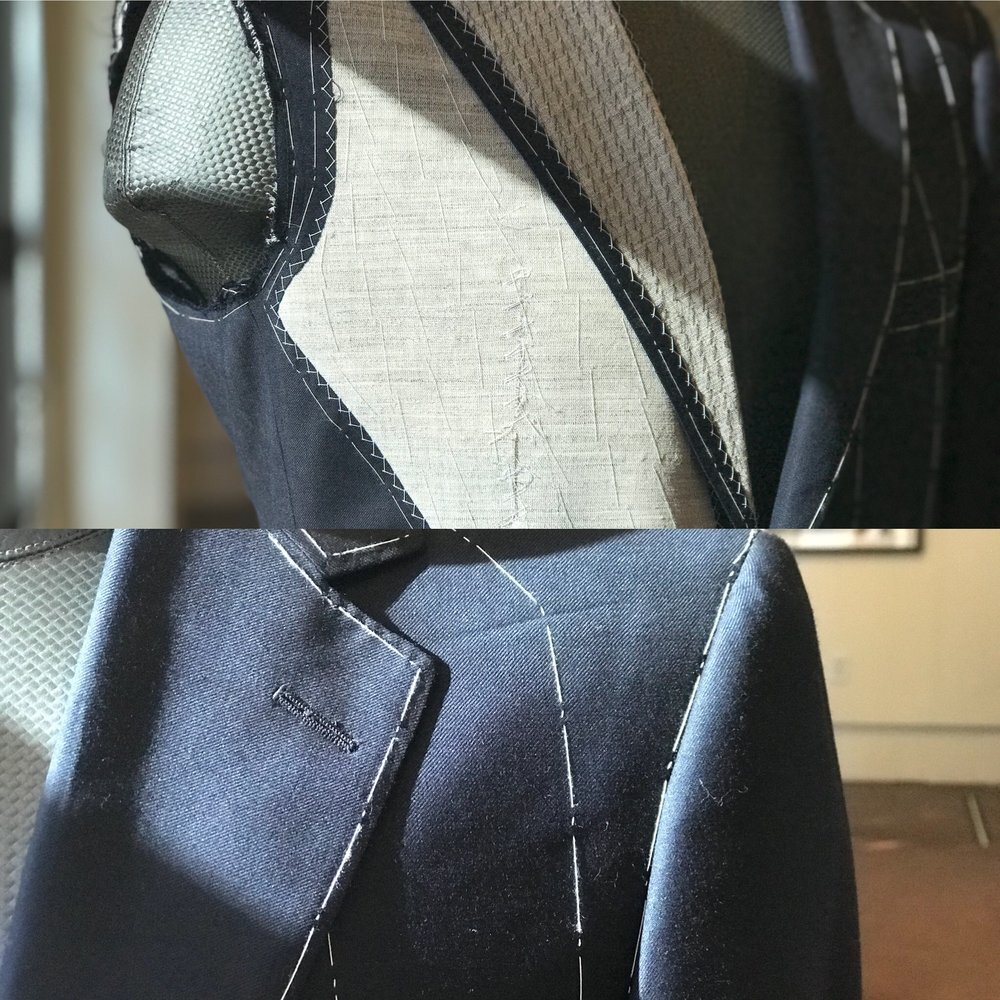Custom Suits Perth: Stand Apart with a Made-to-Measure Suit
Understanding the Tailoring Refine: From Fabric Option to Last Fitting for the Ideal Closet
The customizing procedure is a complex interplay of art and scientific research, starting with the vital choice of textile selection and finishing in the accurate modifications of final installations. Each material kind brings special qualities that influence not only the visual charm yet likewise the garment's durability and suitability for various occasions. Understanding the nuances of customizing techniques can raise one's wardrobe to unmatched degrees of elegance. As we explore these components even more, one need to take into consideration exactly how even the tiniest information can substantially affect the overall outcome of one's personal design.
Value of Textile Selection
Choosing the right fabric is critical in the tailoring process, as it directly influences the comfort, resilience, and general visual of the final garment. The selection of textile sets the structure for the garment's performance, functionality, and design. Different fabrics have unique residential properties, such as breathability, stretch, and weight, which can dramatically influence how the garment drapes and fits the body.

A customized piece made from an ideal fabric not just showcases workmanship however also boosts the user's self-confidence. Comprehending the nuances of textile choice is extremely important for any type of customizing venture. It ensures that the end product not just fulfills the aesthetic wishes of the customer however also lines up with functional demands, therefore attaining an unified balance between form and function in the customized closet.
Kinds Of Fabrics and Their Uses
Understanding the different types of fabrics offered is crucial for making informed decisions during the tailoring procedure. Each fabric has unique characteristics that dictate its viability for certain garments and events.
Its convenience permits it to be customized right into whatever from shirts to gowns. Its natural flexibility assists garments preserve form over time.
Silk exhibits deluxe and is lightweight, making it ideal for eveningwear and fragile blouses; nevertheless, it calls for mindful handling due to its frailty. Linen, with its distinctive surface, is a popular selection for warm environments, supplying a crisp and ventilated feeling, but it wrinkles quickly, which might affect the garment's look.
Synthetic textiles, such as polyester and nylon, deal longevity and resistance to creases, making them suitable for everyday wear and energetic clothes. Recognizing these fabric kinds and their buildings permits much better decision-making, guaranteeing that each tailored item not just fits well yet likewise aligns with the designated purpose and celebration.
The Tailoring Strategies Clarified
The art of customizing counts on a range of methods that change material into well-fitted garments. Central to this procedure is pattern composing, where a dressmaker produces themes based upon the client's dimensions and preferred style. This initial action makes certain that the garment will certainly fit the user effectively before any reducing takes place.
Once patterns are established, reducing techniques enter play. Precision is vital as mistakes can bring about misfitting garments. Tailors frequently make use of various reducing techniques, such as single-layer cutting for intricate designs and multiple-layer reducing for effectiveness on standard patterns.
Basting is one more important method, allowing tailors to temporarily sew material assemble for a preliminary fitting (custom suits perth). This technique supplies the chance to analyze the drape and overall shape before final sewing
Seaming techniques, consisting of flat-felled joints and French seams, boost the garment's durability and visual appeal. Tailors also use methods such as interfacing and extra padding to give framework and form to specific areas, like collars and shoulders.
Lastly, completing techniques, including hemming and side completing, make sure the garment's longevity while providing a polished appearance. With each other, these methods form the backbone of efficient customizing, resulting in charming, tailor-made garments.

Fitting Adjustments and Considerations
After the preliminary customizing strategies have been applied and the garment is built, suitable modifications come to be extremely important to accomplishing the best fit. These modifications deal with various elements of the garment, guaranteeing it contours to the user's body shape and improves overall appearance.

The surge of pants is an additional important element; it needs to sit easily over the hips without triggering discomfort, permitting ease of activity. Hemming lengths for both pants and skirts must reflect the user's preferred design while appreciating percentages.
In addition, interest should be offered to the rear of the garment, guaranteeing site web that there are no unsightly pulls or excess textile - tailor tuxedos perth. Each adjustment needs to be thoroughly taken into consideration, as even small modifications can considerably influence the general fit and aesthetic of the customized piece, inevitably resulting in a closet that emanates self-confidence and elegance
Preserving Your Tailored Wardrobe
Proper upkeep of tailored garments is necessary to preserving their fit and appearance with time. To ensure durability, routine cleaning is extremely important. Always comply with the treatment tag directions, which top tailor perth may suggest completely dry cleaning for fragile materials or equipment washing for even more resilient materials. Avoid regular laundering, as this can use down the fabric and modify the garment's shape.
Storage is equally important; use cushioned wall mounts for jackets and layers to preserve shoulder framework, and store trousers folded nicely or hung to stop creasing. Shield garments from direct sunshine, which can discolor tailor suits perth shades and damages fibers.
Additionally, regular inspections for small fixings can avoid bigger issues. Inspect for loosened switches, fraying seams, or signs of moth damage, addressing these problems promptly to preserve the garment's honesty.
Finally, take into consideration seasonal rotation. Using customized items in moderation allows textiles to recoup, prolonging their life expectancy. By implementing these upkeep strategies, you can ensure that your customized garments stay as beautiful as the day you first used them, improving your optimal wardrobe for several years to find.
Final Thought
The tailoring procedure, including fabric option, proficient methods, and precise suitable modifications, plays an important role in developing garments that boost both comfort and style. Each stage adds to the general effectiveness of the end product, making certain that garments not only fits well however also mirrors individual identification. Comprehending the importance of upkeep extends the life of tailored garments, strengthening their value in a well-curated wardrobe. An extensive technique to customizing culminates in a polished and confident appearance.